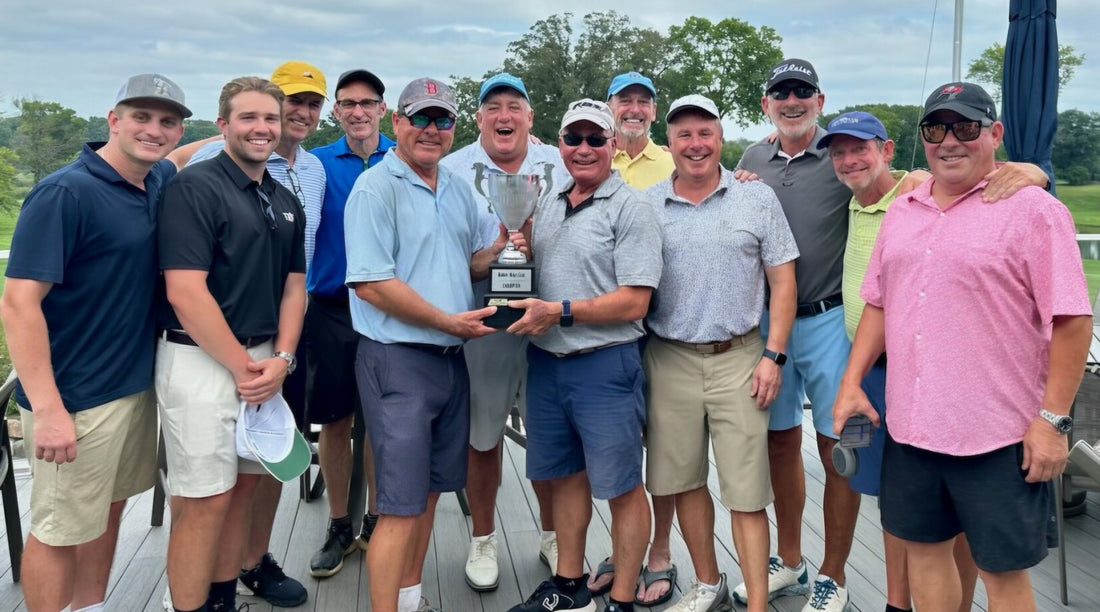
Gasping for Life: A Firsthand Account of Cardiac Arrest and Emergency CPR
Share
By Bart Reed.
Late in the afternoon of August 23, 2024, after a day of golf and sun, several of us were having an animated conversation while sitting around a high-top outdoor bar area by Paul and Kim’s pool. Sig was a particularly active participant.
I walked inside for a few minutes, and when I came out, I noticed that Sig was particularly quiet. A few seconds later, I heard Sig say to Paul, “I’m not doing so well.” At that point, I looked toward Sig and saw him with eyes wide open and his breathing fast and heavy. I asked him, “Sig, how’s your heart rate?” He either didn’t or couldn’t answer. Paul came over and stood next to Sig just as he looked up, his eyes rolled, and he slumped into Paul.
We didn’t know at the time that Sig had gone into cardiac arrest, but it was obvious that something was very, very wrong. Paul hollered for someone to call 911, and Craig made the call. Paul and a few of us helped Sig off of his chair and laid him on the ground as we conveyed information to the 911 operator and tried to figure out what to do.
Adrenaline was running high for everyone, and we knew we needed paramedics and an ambulance right away. Craig ran out front to make sure the paramedics would get to the right place and left the phone with me to continue the dialogue with the 911 operator. We worked to determine whether or not to start CPR. It wasn’t obvious because Sig was taking sporadic gasping breaths, and we were hesitant to start. Fortunately for Sig, though, Paul did start and then yielded to Kim as she rushed outside and, without a second thought, gave Sig CPR with “Staying Alive” driving the beat.
After what seemed like forever but was probably five minutes a first responder team arrived and immediately took over CPR. As directed, we went into the house to give them space but watched them continue working on Sig, giving CPR and about five huge jolts from an AED. Once they were able to get his heart beating again, they quickly moved him into the ambulance and on his way to the hospital, leaving all of us behind trying to process what we had just seen.
A Note from Sig: What They Saw Was Agonal Breathing

First, thank you, Bart. And thank you to Paul, Kim, Craig, and everyone who sprang into action that day. You Are The World's Best.
Those gasping, irregular breaths was something called agonal breathing. None of us knew it at the time and most people have never heard of it. But it's critical to understand.
I don't remember this picture being taken but it was minutes before my SCA. Paul W is in the white hat, Craig is the Longhorn fan and I am on the far right in the blue shirt. Paul P and Rich also helped save my life.
Agonal breathing is not normal breathing. It's a brainstem reflex that sometimes happens in the first moments after cardiac arrest. The body is gasping, but the heart has stopped. These breaths are ineffective and they don't supply the oxygen the body needs.
The danger is that Agonal breathing can look like someone is still alive and trying to breathe. That’s why people often hesitate to start CPR.
Here’s what everyone needs to know:
- If someone is unconscious and gasping, assume cardiac arrest.
- Don’t wait. Call 911 immediately.
- Begin CPR. Push hard and fast in the center of the chest, chest compressions alone can make the difference. If trained, give rescue breaths,
- If there’s an AED (Automated External Defibrillator), use it right away.
Agonal breathing is a cry for help from the body. It's not a sign to wait. It’s a sign to act.
Your actions that day saved my life. But not everyone is as lucky. Let's change that by spreading awareness.
Know the signs. Don’t hesitate. You could be the difference and save a life.
Sig
